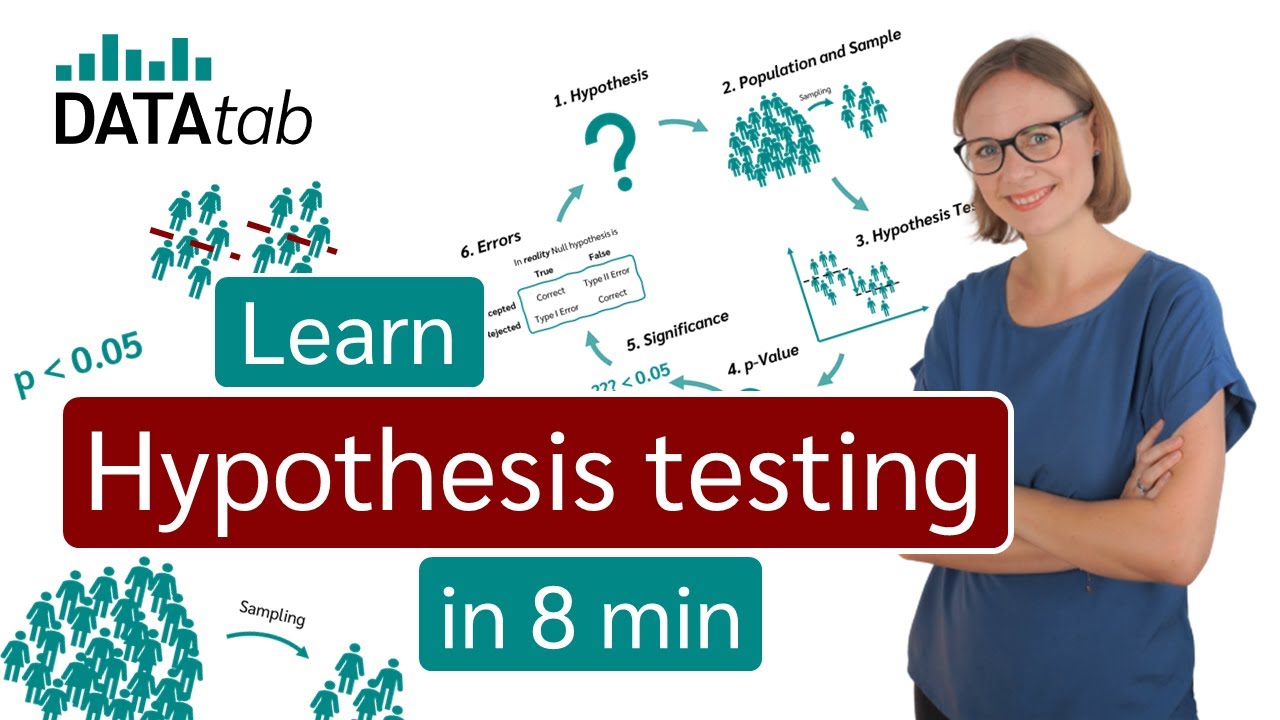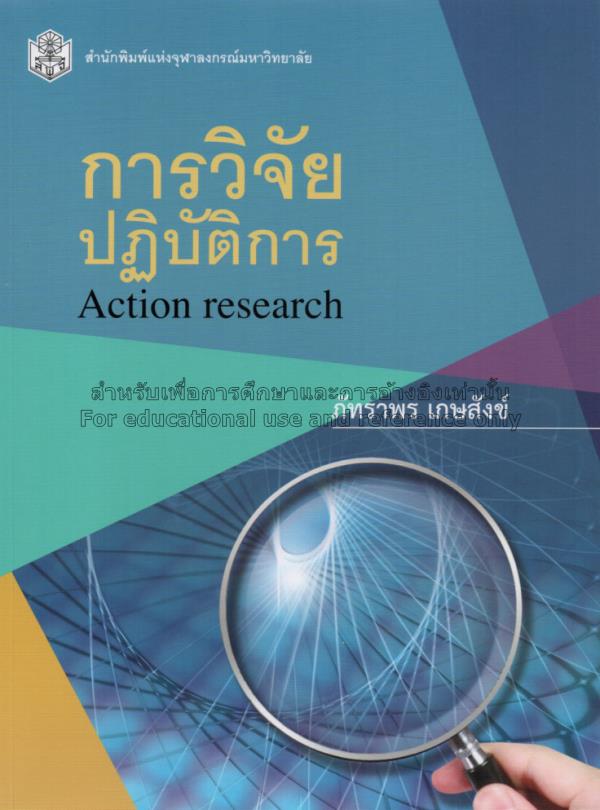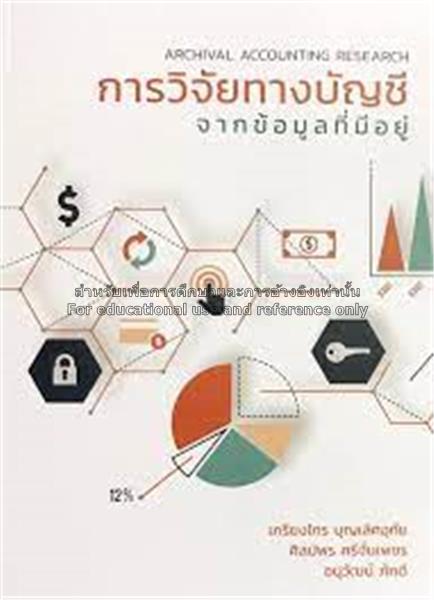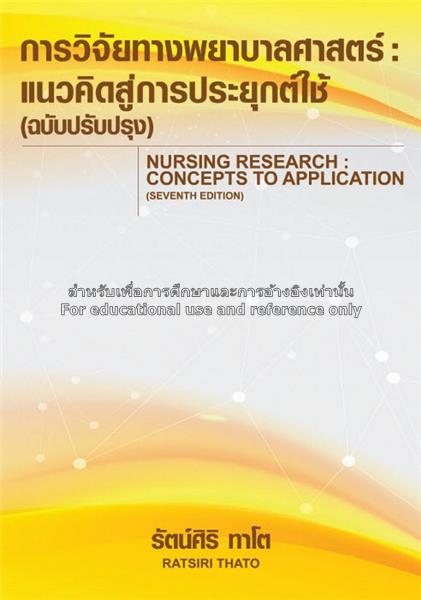Step 3:
Hypothesis generation

Book List
| Author | Robertson, D. Gordon E |
| Published | Champaign, Illinois: Human Kinetics, 2014 |
| Edition | 2nd ed |
| Detail | xii, 428 p. : ill. ; 29 cm |
| Subject | Biomechanics Research Design Science and Technology Branch |
| Added Author | Caldwell, Graham E., 1954- |
| Hamill, Joseph, 1946- | |
| Kamen, Gary | |
| Whittlesey, Saunders N | |
| ISBN | 0736093400, 9780736093408 |
| Table of contents | Planar kinematics / D. Gordon E. Robertson and Graham E. Caldwell -- Three-dimensional kinematics / Joseph Hamill, W. Scott Selbie, and Thomas M. Kepple -- Body segment parameters / D. Gordon E. Robertson -- Forces and their measurement / Graham E. Caldwell, D. Gordon E. Robertson, and Saunders N. Whittlesey -- Two-dimensional inverse dynamics / Saunders N. Whittlesey and D. Gordon E. Robertson -- Energy, work, and power / D. Gordon E. Robertson -- Three-dimensional kinetics / W. Scott Selbie, Joseph Hamill, and Thomas Kepple -- Electromyographic kinesiology / Gary Kamen -- Muscle modeling / Graham E. Caldwell -- Computer simulation of human movement / S.N. Whittlesey and J. Hamill -- Musculoskeletal modeling / Brian R. Umberger and Graham E. Caldwell -- Signal processing / Timothy R. Derrick and D. Gordon E. Robertson -- Dynamical systems analysis of coordination / Richard E.A. Van Emmerik, Ross H. Miller, and Joseph Hamill -- Analysis of biomechanical waveform data / Kevin J. Deluzio, Andrew J. Harrison, Norma Coffey, and Graham E. Caldwell |
| ประเภทแหล่งที่มา |
| Author | Alvesson, Mats |
| Published | London ;Thousand Oaks, Calif. : Sage Publications Ltd, 2011 |
| Detail | 132 p. : ill. ; 22 cm |
| Subject | Social sciences --Research[+] |
| Added Author | Karreman, Dan |
| ISBN | 0857023233 (hbk.), 0857023241 (pbk.), 9780857023230 (hbk.), 9780857023247 (pbk.) |
| ประเภทแหล่งที่มา |
| Author | Stufflebeam, Daniel L |
| Published | San Francisco : Jossey-Bass, c2007 |
| Edition | 1st ed |
| Detail | xxxii, 735 p. cm |
| Table of contents only | http://www.loc.gov/catdir/toc/ecip074/2006036605.html |
| Subject | Evaluation research (Social action programs) |
| Added Author | Shinkfield, Anthony J |
| ISBN | 0787977659 (cloth), 9780787977658 (cloth) |
| General Note | "A Wiley Imprint." |
| Includes index | |
| ประเภทแหล่งที่มา |
| Author | Dyson, Simon |
| Published | Maidenhead, England ;New York : Open University Press, c2006 |
| Detail | xii, 222 p. : ill. ; 24 cm |
| Subject | Social sciences --Research[+] |
| Added Author | Brown, Brian, 1962- |
| ISBN | 033521035X (hbk.), 0335210341 (pbk.) |
| ประเภทแหล่งที่มา |
| Author | จุมพล หนิมพานิช |
| Published | กรุงเทพฯ : สำนักพิมพ์จุฬาลงกรณ์มหาวิทยาลัย, 2567 |
| Edition | พิมพ์ครั้งที่ 1 |
| Detail | 459 หน้า |
| Subject | รัฐประศาสนศาสตร์ --วิจัยเชิงคุณภาพ[+] รัฐประศาสนศาสตร์ --วิจัยเชิงคุณภาพ --วิธีวิทยา[+] รัฐประศาสนศาสตร์ --วิจัยเชิงคุณภาพ --การออกแบบ[+] วิจัยเชิงคุณภาพ |
| Added Author | ชมภูนุช หุ่นนาค |
| ISBN | 9789740343004 |
| Table of contents | บทที่ 1. ความเป็นมา ความหมาย ความสำคัญ และองค์ประกอบของการวิจัยเชิงคุณภาพทางรัฐประศาสนศาสตร์ ขข บทที่ 2. ความงอกงามในความรู้การวิจัยในทางรัฐประศาสนศาสตร์ -- บทที่ 3. การวิจัยทางรัฐประศาสนศาสตร์ ภาพรวมเชิงแนวคิดเกี่ยวกับการออกแบบวิจัยแนวทางต่าง ๆ -- บทที่ 4. ภววิทยา ญาณวิทยา วิธีวิทยา และเทคนิควิธีการของการวิจัยเชิงคุณภาพทางรัฐประศาสนศาสตร์ -- บทที่ 5. กระบวนทัศน์หรือทรรศนะเชิงทฤษฎีและสงครามหรือข้อโต้เถียงเชิงกระบวนทัศน์กับการนำมาประยุกต์ใช้ในการวิจัยเชิงคุณภาพทางรัฐประศาสนศาสตร์ -- บทที่ 6. ลักษณะของประเด็นปัญหา ขอบข่าย & เป้าหมายของการศึกษาวิจัยทางรัฐประศาสนศาสตร์ -- บทที่ 7. การวิจัยเกี่ยวกับการจัดการภาครัฐใหม่ วิธีวิทยาการวิจัยสำหรับการจัดการภาครัฐใหม่ -- บทที่ 8. กระบวนการขั้นตอนการวิจัยและการเลือกหัวข้อเรื่องในการวิจัยทางรัฐประศาสนศาสตร์-- บทที่ 9. วิธีการเก็บรวบรวมและวิธีการวิเคราะห์ข้อมูล และการออกแบบความเที่ยงตรงของการวิจัยเชิงคุณภาพทางรัฐประศาสนศาสตร์ -- บทที่ 10. การเลือกการออกแบบวิจัยเชิงคุณภาพทางรัฐประศาสนศาสตร์ แนวทางกรณีศึกษา -- บทที่ 11. การออกแบบวิจัยเชิงคุณภาพแนวทางทฤษฎีรากหรือทฤษฎีติดดิน -- บทที่ 12. การออกแบบการวิจัยแนวทางชาติพันธุ์วรรณา -- บทที่ 13. การออกแบบวิจัยแนวทางศาสตร์แห่งการตีความ -- บทที่ 14. การออกแบบวิจัยคุณภาพเชิงวิพากษ์ แนวทางการปลดปล่อยและแนวทางการเสริมอำนาจ แนวทางเชิงปฏิบัติการและแนวทางเชิงปฏิบัติการแบบมีส่วนร่วม -- บทที่ 15. การวิจัยภาครัฐ บทบาทท่กำลังงอกงามภายใต้ระบบนวัตกรรม |
| ประเภทแหล่งที่มา |
| Author | พลเทพ วิจิตรคุณากร |
| Published | กรุงเทพฯ : หน่วยผลิตตำรา คณะแพทยศาสตร์ มหาวิทยาลัยสงขลานครินทร์, 2567 |
| Detail | (21), 450 หน้า |
| Subject | การแพทย์ --วิจัย[+] สถิติทางการแพทย์ Health Science Branch |
| Added Author | มหาวิทยาลัยสงขลานครินทร์. คณะแพทยศาสตร์ |
| หน่วยผลิตตำรา คณะแพทยศาสตร์ มหาวิทยาลัยสงขลานครินทร์ | |
| ISBN | 9786166086928 |
| Table of contents | บทนำ -- การทบทวนวรรณกรรม -- ประชากร ตัวอย่าง การคำนวนขนาดตัวอย่างและกลุ่มตัวอย่าง -- ความถูกต้อง ความแม่นยำ ความลำเอียง และตัวแปรกวน -- รูปแบบการศึกษา -- ตัวแปรในงานวิจัย -- การเก็บรวบรวมข้อมูลและแบบเก็บข้อมูล -- แนะนำการใช้โปรแกรม R -- การจัดการข้อมูลด้วยโปรแกรม R -- การวิเคราะห์ข้อมูลเชิงพรรณนาและอนุมานด้วยโปรแกรม R -- การวิเคราะห์การถดถอยเชิงเส้นด้วยโปรแกรม R -- การวิเคราะห์การถดถอยโลจิสติกด้วยโปรแกรม R -- การวิเคราะห์การรอดชีพด้วยโปรแกรม R -- การทดสอบเพื่อการวินิจฉัยโปรแกรม R -- การนำเสนอด้วยภาพ -- การเผยแพร่งานวิจัย |
| ประเภทแหล่งที่มา |
| Author | เจษฎา คุณโน |
| Published | aกรุงเทพฯ : สำนักพิมพ์จุฬาลงกรณ์มหาวิทยาลัย, 2565 |
| Edition | พิมพ์ครั้งที่ 2 |
| Detail | ก-ซ, 264 หน้า : ภาพประกอบ |
| Subject | วิทยาศาสตร์การแพทย์ --วิจัย[+] วิทยาศาสตร์การแพทย์ --วิจัย --วิธีวิทยา[+] วิทยาศาสตร์สุขภาพ --วิจัย[+] วิทยาศาสตร์สุขภาพ --วิจัย --วิธีวิทยา[+] Health Sciences Branch. |
| ISBN | 9789740340560 |
| Table of contents | บทที่ 1. บทนำงานวิจัย -- บทที่ 2. การกำหนดปัญหาวิจัย -- บทที่ 3. การเลือกวิธีออกแบบงานวิจัย -- บทที่ 4. ปัจจัยรบกวนและอคติ -- บทที่ 5. เครื่องมือสำหรับเลือกกลุ่มตัวอย่าง -- บทที่ 6. เครื่องมือสำหรับเก็บข้อมูล -- บทที่ 7. เครื่องมือสำหรับการวิเคราะห์ข้อมูล -- บทที่ 8. เอกสารอื่นๆ -- บทที่ 9. การร่างผลงานวิจัยสำหรับตีพิมพ์ -- บทที่ 10. แหล่งสืบค้นเอกสารอ้างอิง -- บทที่ 11. เครื่องมือตรวจสอบ -- บทที่ 12. การสร้างเอกสารอ้างอิง |
| ประเภทแหล่งที่มา |
Ebook list
Full Text Article
The document discusses statistical analysis and mathematical modeling, focusing on Mean Squared Error (MSE) and the application of Bayesian models to estimate errors in measured data. It explores how sensory information, such as visual and proprioceptive inputs, can be integrated for more accurate estimations.
Additionally, the document covers neuroscience-related data analysis, particularly in sensorimotor control and perception-based learning. It explains how uncertainty in measurements can be minimized using Bayesian inference and discusses experiments involving lateral shifts and bimodal distributions.
The research references various studies on probability, sensory integration, and optimal control, emphasizing how mathematical models can enhance decision-making and prediction accuracy in complex systems.
This paper examines the impact of mood on the hypothesis generation
and ethical judgments of auditors. Prior psychology research documents different ef-
fects of negative and positive mood on information processing such that negative (pos-
itive) mood leads to more systematic (heuristic) processing (e.g., Forgas 1995a; Bless
2000). Theoretical accounting research (Gaudine and Thorne 2001) proposes a positive
relation between positive mood and ethical decision-making. Based on this research,
we predict that negative (compared with positive) mood will enhance performance on
a hypothesis generation task and impair performance on two ethical tasks. These pre-
dictions are tested in an experiment in which auditors perform an analytical procedures
task involving the generation of explanations for fluctuations in financial ratios and two
ethical tasks involving the truthful reporting of information. Consistent with predictions,
the results show that auditors’ judgments are influenced by their mood state. Specifi-
cally, auditors in a negative (compared with a positive) mood generated more correct
explanations for fluctuations in financial ratios, but made less ethical judgments. The
implications of these results are discussed, and suggestions for future research are
offered.
form the bedrock of every scientific study and thus demand careful and precise
development. Guidelines such as the FINER (feasible, interesting, novel, ethical,
relevant) and PICOT (population, intervention, comparison group, outcome of
interest, and time) criteria provide a structured approach to establishing the study’s
foundation. Ultimately, clinical relevance and a well-defined study concept are pivotal
for a successful publication process and the scientific contribution that a study can
make to the current literature.
form the bedrock of every scientific study and thus demand careful and precise
development. Guidelines such as the FINER (feasible, interesting, novel, ethical,
relevant) and PICOT (population, intervention, comparison group, outcome of
interest, and time) criteria provide a structured approach to establishing the study’s
foundation. Ultimately, clinical relevance and a well-defined study concept are pivotal
for a successful publication process and the scientific contribution that a study can
make to the current literature.
guideline development groups need to factor in the
sociocultural acceptability of an intervention, as well as
contextual factors that impact on the feasibility of that
intervention. Qualitative evidence synthesis offers one
method of exploring these issues. This paper considers the
extent to which current methods of question formulation
are meeting this challenge. It builds on a rapid review
of 38 different frameworks for formulating questions.
To be useful, a question framework should recognise
context (as setting, environment or context); acknowledge
the criticality of different stakeholder perspectives
(differentiated from the target population); accommodate
elements of time/timing and place; be sensitive to
qualitative data (eg, eliciting themes or findings). None of
the identified frameworks satisfied all four of these criteria.
An innovative question framework, PerSPEcTiF, is proposed
and retrospectively applied to a published WHO guideline
for a complex intervention. Further testing and evaluation
of the PerSPEcTiF framework is required.
Julius AI
Can Making hypothesis testing more accessible and accurate. By mastering hypothesis testing, researchers can confidently draw meaningful conclusions from their data, paving the way for discoveries and informed decision-making.
Prompts
"I am working on hypothesis development for my research on [research topic].
Please provide:
1.Characteristics of a strong research hypothesis
2.Types of hypotheses (null, alternative, directional, non-directional)
3.Examples of well-formulated hypotheses in this field
4.Common mistakes and how to avoid them
The response should be concise and research-focused."
"I am developing a hypothesis for my study on the effectiveness of university-led community engagement programs.
Please provide:
1.Examples of testable hypotheses in social sciences
2.Types of hypotheses and when to use them
3.Best practices for formulating a strong hypothesis
The response should be structured and research-oriented."
"ฉันกำลังพัฒนาสมมติฐานสำหรับการศึกษาหัวข้อ ประสิทธิภาพของโครงการบริการวิชาการต่อการพัฒนาชุมชน
กรุณาให้ข้อมูลเกี่ยวกับ:
1.ตัวอย่างสมมติฐานที่สามารถทดสอบได้ในสังคมศาสตร์
2.ประเภทของสมมติฐาน (เช่น สมมติฐานศูนย์ สมมติฐานทางเลือก)
3.แนวทางในการกำหนดสมมติฐานที่ถูกต้องและเป็นไปได้
คำตอบควรเป็น เชิงวิชาการและมีตัวอย่างประกอบ"
SPSS (KKU Member)
Aids in hypothesis generation by analyzing data patterns, identifying correlations, and applying exploratory statistical techniques to formulate research hypotheses.
PSPP
is, in effect, the open-source answer to IBM SPSS Statistics. It’s not 100% identical to SPSS, but it is very similar, so SPSS users should feel at home with this software.
R
is another free SPSS alternative, used far and wide for data and statistical analysis. It takes the form of a programming language and run-time environment, designed entirely with stats and data in mind.
SMART Criteria
SMART Criteria is a framework for setting goals that are Specific, Measurable, Achievable, Relevant, and Time-bound. It helps research by making study objectives clear, concrete, and measurable, ensuring effective evaluation. This improves the design and execution of research for better outcomes
User Guide
User Guide
Literature Review Matrix
Associate Professor Ziaul Haque Munim presents a literature review matrix and demonstrates an example. Such literature review matrix are useful for keeping track of readings, particularly for systematic literature reviews and content analysis. They are also useful for the literature review section of empirical studies.
User Guide
Behavioral theory
Khan Academy provides practice exercises, instructional videos, and a personalized learning dashboard for self-paced learning. It covers subjects like math, science, history, and computer programming, using adaptive technology to identify strengths and gaps. Partnering with institutions like NASA and MIT, it offers specialized educational content.
User Guide
Economic models
Khan Academy is a nonprofit offering free, world-class education through quizzes, videos, and articles on various subjects like math, science, and history. We provide tools for teachers to help students succeed in school and beyond. Join us in supporting education by donating or volunteering today!







